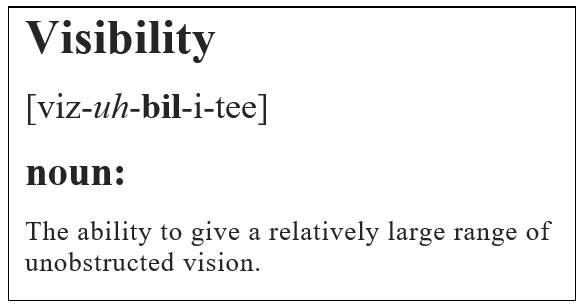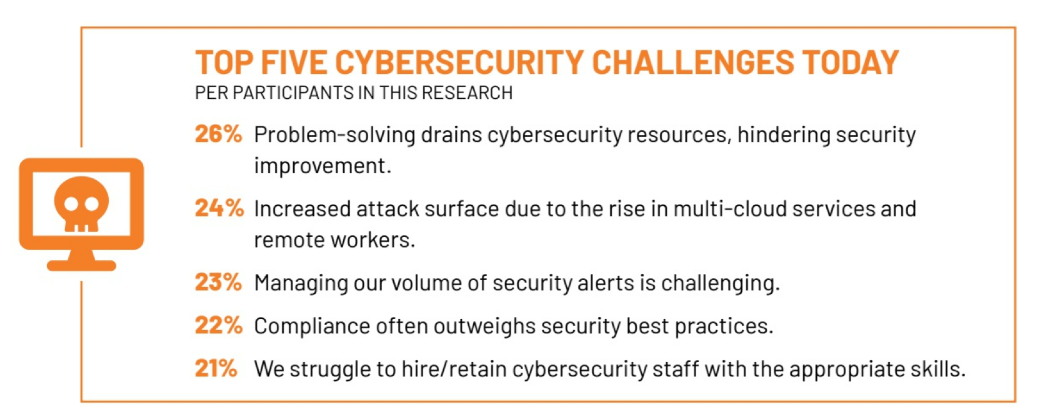Why Network Visibility Matters in Modern Security Operations

In a sea of industry jargon, visibility is a concept that continues to resonate with IT teams and network professionals, with real-time performance metrics like latency, bandwidth utilization, packet loss, and error rates painting an insightful picture of network reliability.

Security teams define visibility from a slightly different perspective, with tools like firewalls, VPN concentrators, and access controls shining a spotlight on intruders to protect entry points. The advent of hybrid and multi-cloud network topologies, along with the indelible shift towards remote and mobile working arrangements, has created a new paradigm for security visibility, along with a new set of tools and practices to support it.
Reinforcing Visibility for SecOps Teams
Enhanced visibility for security teams requires a shift from reactive to proactive strategies. In other words, time and energy spent sifting through security alerts or reacting to false positives (e.g. firefighting) is time that is better spent gathering intelligence, analyzing forensic data, or fortifying defenses.
The cybersecurity landscape continues to introduce new challenges, with the VIAVI 2025/26 State of the Network Study revealing the convergence of resource constraints, ratcheting compliance requirements, and increased attack surfaces owed to the rise in multi-cloud services. Doing more with less means applying a higher level of intelligence to balance agility with accountability, and finding the needles in the proverbial haystack, rather than viewing the haystack from 30,000 feet above.

High-Fidelity Threat Forensics
The term “high-fidelity” is often associated with stereo systems and other sound equipment, with the fidelity aspect tied to minimized noise and distortion. High-fidelity threat forensics combine enriched flow records and packets to create a virtual 24/7 security camera to reveal who is communicating at any given time, what devices are connected, and what data is being transmitted into (or within) the network.
While NetOps teams leverage this enhanced visibility to optimize the end-user experience, SecOps teams focus on identifying potential threats or malicious activities quickly and minimizing dwell time when threats elude front-line defenses. The latter objective is essential for maintaining compliance and customer trust, despite data pointing to increasing dwell times and higher associated costs.
Three Keys to NetSecOps Visibility
Omnipresent security threats have done little to move the needle for cybersecurity budgets, with the rise of AI-driven tactics, public cloud adoption, and high data volumes making true visibility elusive. Industry leaders agree that scaling SecOps to meet these challenges means deploying a cost-effective combination of tools and strategies.
- Metadata and Packets
Packet capture and analysis solutions streamline performance monitoring by providing the context needed to quickly diagnose and resolve issues. They solutions have also become an indispensable element of the cybersecurity tool kit. Packet data reveals the precise timeline, source, and compromise scope associated with each security incident, while providing an indisputable and unabridged resource for post-breach forensic investigations.
For locations at the network edge with limited storage capacity, packet-derived metadata improves visibility into network behavior while bolstering the security posture. Even basic information on the size, payload, and volume of packets can be indicative of threats like tunneling or packet fragmentation designed to bypass firewalls and other traditional security measures.
- Domain Isolation
Isolating the problem domain to determine the contribution of the network, client, server, and application for a given performance issue accelerates mean time to repair (MTTR) while streamlining issue prioritization. Patented VIAVI End-User Experience scoring utilizes packet data and machine learning to create a scorecard for each transaction, complete with a breakdown of domain contributions. This valuable feature allows security teams to contain the lateral movement of threat actors and eliminate vulnerabilities using auto-generated dependency maps and more targeted in-depth analysis.
- Threat Intelligence
Cybersecurity threat intelligence refers to the combination of collected, analyzed, and disseminated information on threat actors and their tactics, based on shared information from reported incidents and other real-time intel. Threat intelligence data backed by user-friendly, integrated workflows allows security teams to quickly surmise indicators of compromise (IoC), and determine what potential adversaries, tactics and targets are consistent with the profile. These insights enhance SecOps visibility by providing much-needed context, potential motivation, and IP address history to layer upon the high-fidelity threat forensics retracing each step.
VIAVI Observer is the Complete Solution
The VIAVI Observer Platform integrates network monitoring and security operations in one versatile platform, providing unmatched visibility and a shared source of truth to resolve issues quickly while optimizing performance and reliability. Observer brings the best in threat forensics, threat intelligence, and advanced analytics together with a streamlined, user-friendly interface and flexible dashboards.
Purpose-built appliances for packet capture and analysis, enriched flow record generation, and metadata capture provide the real-time traffic insight, domain isolation, and long-term visibility needed to stop security threats in their tracks. Seamlessly integrated threat intelligence powered by CrowdStrike delivers instant access to the latest information on IoC profiles, IP history, and emerging threats, while Connection Dynamics ensure the right packet data is available on demand.



